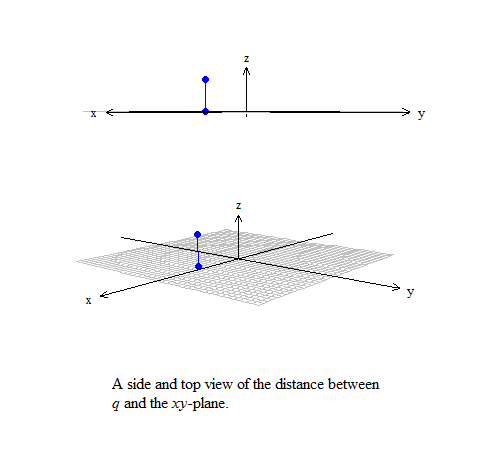Connecting...

This is a quick preview of the lesson. For full access, please Log In or Sign up.
For more information, please see full course syllabus of Multivariable Calculus
For more information, please see full course syllabus of Multivariable Calculus
Multivariable Calculus More on Planes
Lecture Description
In the last lesson we talked about planes, and today we are going to talk a little bit more about planes. We want to become reasonably familiar with the definition, sort of manipulating, doing different types of problems, thinking geometrically, and using already the intuition that we have about geometry to solve different problems regarding this. In this lesson, you will learn how to find the distance from some point in space to a given plane. There's a formula and we are going to go through a bit more of a derivation for, simply because we want you to understand where it comes from.
Bookmark & Share
Embed
Share this knowledge with your friends!
Copy & Paste this embed code into your website’s HTML
Please ensure that your website editor is in text mode when you paste the code.(In Wordpress, the mode button is on the top right corner.)
×
Since this lesson is not free, only the preview will appear on your website.
- - Allow users to view the embedded video in full-size.
Next Lecture
Previous Lecture










































 Answer Engine
Answer Engine




0 answers
Post by Brett Pienaar on October 28, 2024
vector P in ex 3 part 2 does not fit on the line of intersection of the two planes.
0 answers
Post by Indu Sreedhar on May 12, 2017
how the b-3c=1? it should be b-3c=0 right?
0 answers
Post by Indu Sreedhar on May 12, 2017
how the second equation became b-3c =1 I thought it should be b-3c=0
3 answers
Wed Jan 3, 2018 4:14 AM
Post by Hen McGibbons on August 22, 2015
I have another question. I recall from a previous video lecture, that you assumed 2 of the variables. So for example, you let x= 5 and y = 2. I went back through all the video lectures but I couldn't find the one I am thinking about. Why would you be able to assume 2 of the variables like that? To me, this is even more confusing than being able to assume 1 variable (letting z = 2 for examples.)
1 answer
Sat Aug 29, 2015 9:14 PM
Post by Hen McGibbons on August 22, 2015
i can't wrap my head around letting z = 1 and then letting z = 2 in Example 3. I've also seen you use this method in several other examples in the videos before this. Why can you just assume that z=1 will work for both equations of a plane?
0 answers
Post by Shelly Wang on May 24, 2014
For Example 3, I used x=0 and received an answer of y=-2 and z=-3 yielding a p=(0,-2,-3). Then, I used x=1 and received an answer of y=2 and z=2 yielding a q=(1, 2, 2).
After doing q-p, my final answer for the vector is (1, 4, 5) which does not equal c(-3,-4,-3) where c is any real number.
Is my answer correct?
2 answers
Wed Oct 30, 2013 2:41 AM
Post by Christian Fischer on October 26, 2013
A quick question regarding planes: When you in your last example can choose any value of z (you choose 1 and 2) does that imply that planes just like vectors are independent of the coordinate system, so the reason you can choose ANY value of z is because you can lay the plane any place in the z axis? So a plane is not fixed in space until the point where you choose values of x,y and z?
2 answers
Wed Oct 30, 2013 2:26 AM
Post by Christian Fischer on October 26, 2013
Hi professor, thank you for a great video. I don't understand why you project vector qp onto qq`, and not instead project qq`onto qp`since qq´has the length of the distance between the two points and thus it's shadow projected onto qp would have that same length?
Have a great day,
Christian
1 answer
Fri Sep 20, 2013 5:28 PM
Post by yaqub ali on September 20, 2013
professor, why is it when solving for the plane running through the three points. why did you randomly let C=1
could you have randomly chosen B=1
besides what if C=1 isn't on the plane. how do you make sure the point you randomly chose is on the plane??
2 answers
Last reply by: Justin Malaer
Wed Feb 13, 2013 8:57 PM
Post by Justin Malaer on February 1, 2013
To find the vector n orthogonal to the plane, could you just take the cross product of vector ST cross vector SU? Because then you would have a vector orthogonal to the plane if I'm correct.
3 answers
Sat Dec 29, 2012 5:24 PM
Post by Mohammed Alhumaidi on July 14, 2012
Isn't b = 4 when C = 1 ?
b - 3C = 1
b - 3 = 1
b = 1 + 3
b = 4